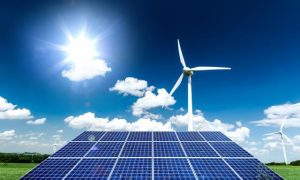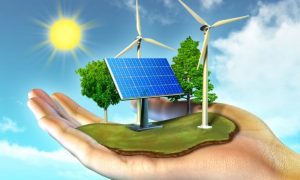
When it comes to climate change, Uganda has been doing one thing right and that is maintaining a small carbon footprint. According to the information from Our World in Data, 2017 statistics stood at 0.12 tonnes per capita. To maintain this status, at the United Nations climate conference of 2015, Uganda pledged to reduce its carbon emissions by 22 per cent by the year 2030. With wildfires blazing through the US, heavy rains accompanied by floods sweeping through Europe, temperatures rising, drought, countries more than ever the world is discussing moves to adopt clean technology to mitigate climate change.
Cleantech has been around but popularized in the last two decades. It entails the investment of asset class, technology, and business sectors into clean energy, environmental, and sustainable products and services. Cleantech ranges from the use of renewable energy sources such as wind, solar, hydro to smart cities, smart agriculture, smart electric grids, transport services and smart infrastructure.
At the budget reading for the Financial Year 2021/22, government allocated Shs1.1 trillion for sustainable energy development.
Speaking on behalf of the Ministry of Energy and Mineral Development (MEMD), the Commissioner of Renewable Energy, Brian Isabirye says the Energy and Mineral Development Sector has consistently ranked among the top five priorities, scoring 9.2 per cent and 8.2 per cent of the total budget for the years 2019-2020 and 2020-2021 financial years, respectively. However, given the wide mandate of the energy sector, there is always a resource enhancement gap.
Isabirye further says that the road to Cleantech is still long and beset with a few hurdles, some of which include the lack of public awareness on use, importance, socio-economic and environmental benefits that are derivable from Sustainable energy (SE) and its technologies. At the implementation level, there is hesitation towards cleantech due to fear of the high initial (upfront) investment and installation costs of SE equipment. Besides these costs, there is still a lack of sufficient technical skills and institutional capacity. The target users of clean energy technology are mostly found in poor rural communities and issues of affordability still loom.
There is a light at the end of the tunnel, however, because of an increasing realization that clean energy is a smart investment. Isabirye provides an example of how the contribution of solar with grid connection to the national electricity mix has steadily been growing from zero in 2016, to 60.83 Mega Watts in 2020. In the same period, the use of solar to the overall mix has grown from zero to 4.8 per cent. He clarifies that these statistics, however, do not capture the off-grid and stand-alone home systems.
Isabirye points out “The country is witnessing unprecedented impetus for carbon neutrality, with a commitment to enhanced Nationally Determined Contributions. Across public and private sectors, there is growing consensus that clean energy is a win-win solution for building resilient communities, and an engine for jobs,” the commissioner says.
When it comes to the bottlenecks that hinder the development of Cleantech, Isabirye says the ministry is addressing them through the introduction of policy and institutional mechanisms at different levels in Uganda. Government through MEMD is lessening political and regulatory investment risks, instituting energy subsidy transfer and cost reduction measures, piloting and promoting favorable feed-in-tariff policies.
He said “We are also providing consistent information, creating awareness about available technologies, establishing and enforcing quality standards for Clean Energy equipment. Tax subsidies and policy incentives such as Value Added Tax and import duty exemptions for solar systems are in place. These incentives have increased the affordability and effective demand of items promoting clean energy, particularly among rural communities.”
He adds, “Incorporating technology in the ministry is high on the agenda as well. MEMD is setting plans and actions for leveraging digital technology that will convert analogue information into digital information. The ministry is digitally evolving to support better decision-making, generate better analysis and to automate or control operations intelligently. For example, MEMD is supporting efforts geared at catalysing utilization of digital data for decision making in productive use of clean energy and other renewables.
Asked whether Uganda will achieve its goal of reducing carbon emissions by 22 per cent, Isabirye expressed confidence in efforts across industries in encouraging climate-smart agriculture through several policies and measures in the energy supply, forestry and wetland sectors. “Uganda should not only meet but also surpass the target,” he says.
The journey towards clean energy and its associated technology at The Innovation started in 2020. Through Future Lab, the Energy Lab is dedicated to driving innovation with the energy sector. The Energy Lab works with leading organizations spanning the energy industry and cross-disciplinary experts, to support and create innovative solutions that address challenges affecting the community. It identifies problems in the industry and scouts for startups or entrepreneurs that develop technological solutions to solve the identified problems.
One of the companies under the support of The Innovation Village in the energy sector, is the fast-growing startup, Ecoplastile. This startup emerged as one of the top winners of the Ninja COVID-19 Response and Recovery challenge, an initiative of Japan International Cooperation Agency (JICA) in partnership with The Innovation Village and Ministry of Science, Technology and Innovation.
Ecoplastile is a company fighting deforestation through manufacturing construction materials from recycled plastic. The Innovation Village is currently taking Ecoplastile through an incubation programme that will enable it to scale as it launches its commercial production pilot of plastic lumber and roofing tiles products, reducing plastic waste and carbon emissions.
Samantha Niyonsaba, the Future Lab Lead says, through a united front of the private sector, innovators, technology and the public sector, we shall maintain the lead in the journey towards an environment with healthy, zero carbon recovery that prevents future threats, create decent jobs, and unlock inclusive, sustainable growth that is envisioned by the UN.
Within the private sector, one of the long-term players in the clean energy technology sector is a company called New Energy Nexus. The company’s solution towards promoting clean energy is an accelerator and incubation program for Community Based Organizations (CBOs) to launch sustainable clean energy enterprises to sell household cleantech like cookstoves and solar. These will receive a business startup toolkit comprising clean energy loan financing, capacity building in the form of entrepreneurship training and business mentorship in bookkeeping technology.
The Abundance Team Manager, Marvin Tumusiime says, the company has a spread of products made with clean technology. These involve solar energy heating and lighting devices, energy-saving cooking ware, eco-friendly water coolers and filters.
While commenting on the recent budget allocation towards sustainable energy, Tumusiime hopes that the Ministry of Energy can prioritize regulating harmful practices like charcoal use that is compromising the environment and further increasing carbon emissions. I hope that there are regulations from the Ministry towards curbing the prevalence of counterfeit products on the market that are cheap, unsustainable, Tumusiime added.
While some reports have indicated that Cleantech might not solve the problem quickly, it is a great place to start. Complementing this with other interventions such as tree planting would help. Changing our lifestyles including adopting video conferencing instead of business travel, buying fewer clothes, insulating our houses, building smaller houses, eating less meat, drinking less milk and throwing away less food, would help mitigate climate change.




























